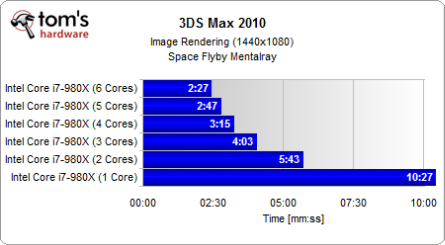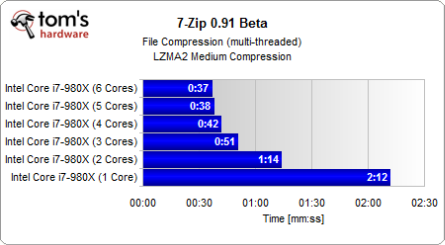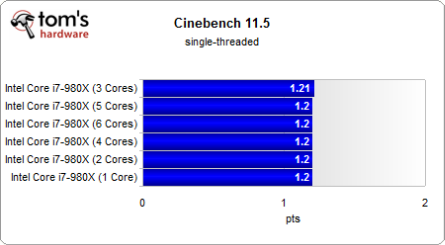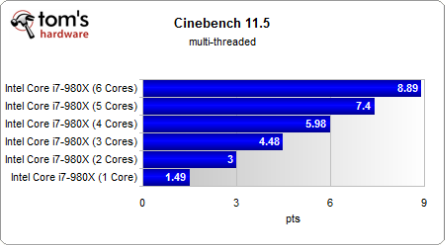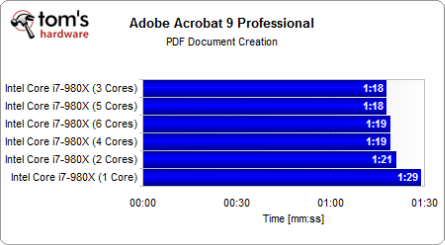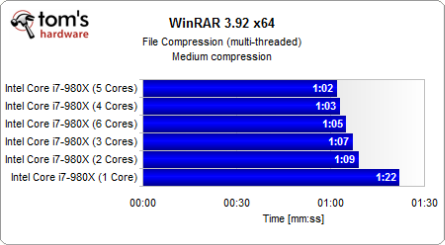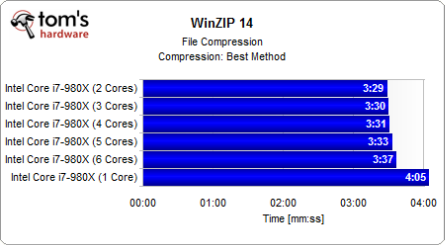Six-Core Analysis, Part 2: Intel Core i7-980X Scaling
Intel's Turbo Boost technology provides a mechanism for improving system performance most significantly in lightly-threaded apps, even at peak loads. But what is the feature's impact on a Gulftown-based Core i7-980X processor with different core counts?
Benchmark Results: Applications
3ds Max scales extremely well with each additional core.
Similar conclusions arise with 7-Zip, although you’re not getting a lot more performance beyond four or five cores.
Cinebench in its multi-threaded run shows that real life performance doesn't scale linearly with every processing core added. There is a bit of overhead incurred with each addition. Again, we’re seeing best results from the six-core configuration.
Adobe’s Acrobat 9 always takes at least a few seconds to generate a PDF document from a complex Word or PowerPoint file. Our benchmark uses a 115-page presentation, but the time savings on multiple cores versus a single core are embarassing for Adobe. It should be possible to parallelize this type of workload to a much greater extent. As things stand, all you really need is a fast, dual-core CPU.
Photoshop CS4 is a perfect example of how applications can take maximum advantage of modern multi-core processors.
WinRAR is thread-optimized and benefits from each CPU core enabled during testing, but benchmark variance is about as large as the performance gains witnessed once you exceed three cores.
WinZip needs a serious update. Variance is high and performance only scales if you boost clock speeds. What a disappointment for such a popular tool.
Get Tom's Hardware's best news and in-depth reviews, straight to your inbox.
Current page: Benchmark Results: Applications
Prev Page Benchmark Results: 3DMark And PCMark Vantage Next Page Benchmark Results: Audio/Video